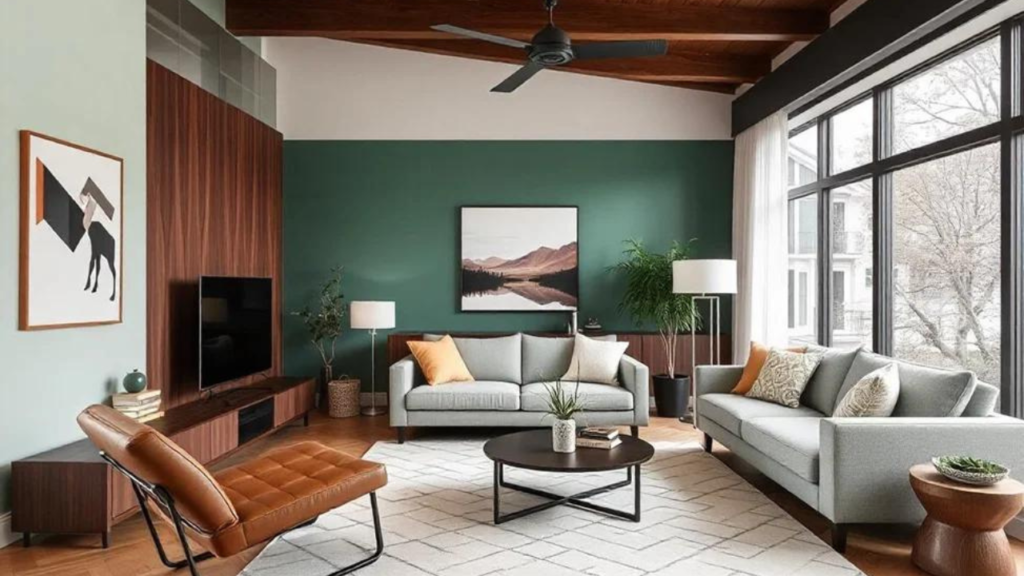In today’s fast-paced and competitive market, businesses must find innovative ways to stand out and captivate customers. The furniture industry is no exception. As consumers increasingly turn to online shopping, the demand for engaging, immersive experiences has skyrocketed. At its core, product visualization refers to using advanced digital tools, such as 3D modeling software and furniture visualizer applications, to create lifelike, virtual models of products. For the furniture industry, this means retailers can display furniture in ways that transcend traditional photography or showroom experiences. From creating mockups to showcase different colors, materials, and settings to offering interactive experiences where customers can configure items, furniture visualizer does more than “bring products to life”—it revolutionizes how consumers shop.
This technology allows customers to see their potential purchases from all angles and in various environments, helping them make informed buying decisions. Whether it’s a modern office chair or a rustic dining table, 3D visualization can demonstrate the product’s true potential. For furniture businesses, this can mean fewer costly production errors, reduced returns, and higher customer satisfaction.
Why Furniture Visualizer Matters in Furniture
For furniture businesses, visual appeal is everything. Unlike smaller consumer goods, which might rely solely on product descriptions or static images, larger and more complex items like sofas, dining tables, or cabinets must be fully experienced before purchase. This is where the furniture visualizer transforms the buying process from static and one-dimensional into something immersive and dynamic.
Traditionally, furniture companies relied on photography of prototypes or finished products. However, this approach has limitations in customization, cost, and variety. With 3D visualization, businesses can create digital representations of their products, showing multiple versions—such as different color schemes, fabric options, or layout configurations—without needing separate photoshoots. This means customers can virtually “try out” the furniture in their homes, even before purchasing.
How Furniture Visualizer Works
Furniture visualizer typically involves a blend of technologies, such as 3D rendering, CAD (Computer-Aided Design), and virtual modeling. These tools allow businesses to create hyper-realistic images of their products in different environments. Technology isn’t just about showing a picture of a product and creating an interactive experience that feels almost tangible.
For instance, a furniture company can use visualization to show a sofa in various living room settings, complete with customizable upholstery, lighting scenarios, and decor elements. Clients might prefer a sleek, modern aesthetic for their urban apartment but envision a cozy, rustic vibe for their vacation home. Through the furniture visualizer, they can see both scenarios, helping them make more confident decisions.
Beyond aesthetics, furniture visualizers can demonstrate functionality and features in ways traditional images or text descriptions cannot. Want to show how a dining room set can be expanded from seating six to eight? How about demonstrating the layered support of a memory foam mattress or the craftsmanship behind a solid wood table? Furniture visualizers can do all this and more, giving customers a deeper appreciation for the quality and versatility of the furniture.
Why Furniture Visualizer Is Essential for Digital Marketing
Product visualization enhances the shopping experience and is a powerful marketing tool. It allows brands to present their products in their best light—literally and figuratively. But it’s not just about creating visually appealing content; it’s about creating an emotional connection. When customers can picture a piece of furniture in their space with their preferred configurations, they are more likely to engage with the product and purchase.
Consider the shift in consumer expectations. Today’s customers want more than just a product—an experience. They expect brands to provide immersive, interactive shopping opportunities, especially in the digital realm. With 3D furniture visualizer, furniture retailers can meet these expectations by offering virtual try-before-you-buy experiences. Whether it’s testing out how a sectional fits in a specific room layout or exploring different color combinations, furniture visualizer provides the interactivity customers crave.
Benefits of Furniture Visualizer for Furniture Retailers
For furniture businesses, investing in 3D product visualization has many benefits, ranging from better customer experiences to improved operational efficiency. Let’s explore these in more detail:
- Enhanced Customer Experience: Customers can visualize products in their own spaces, customize options, and gain a better understanding of what they’re buying. This reduces uncertainty, leading to higher satisfaction and fewer returns.
- Stronger Marketing Campaigns: High-quality 3D visuals capture attention and can be used across websites, social media, and advertising campaigns. Visuals boost engagement, making customers more likely to remember your brand.
- Higher Conversion Rates: An interactive furniture visualizer gives customers more confidence in their purchasing decisions. They know exactly what they’re getting, which can reduce cart abandonment and drive up sales.
- Increased Brand Recognition: Well-executed visual content leaves a lasting impression. Customers who remember your furniture are more likely to return and recommend your brand.
- Cost Savings: By eliminating the need for multiple physical prototypes or photoshoots, furniture visualizers help businesses save on production and marketing costs. They also speed up the time to market, giving companies a competitive edge.
How 3D Visualization Improves SEO
Interestingly, the benefits of furniture visualizers extend beyond the customer experience and into search engine optimization (SEO). Websites incorporating 3D visual content often see improved engagement metrics, such as lower bounce rates and higher time on page, which signal to search engines that the content is valuable.
Moreover, high-quality visuals are more likely to be shared across social platforms, increasing the product’s reach and visibility. When customers share interactive 3D visuals or immersive product experiences, they create organic backlinks that improve your site’s SEO performance.
Why Invest in 3D Visualization?
If you’re a furniture business owner and haven’t yet embraced furniture visualizer, now is the time. By investing in 3D visualization, you’re not just enhancing the customer experience—you’re future-proofing your brand. This technology allows businesses to streamline production, reduce costs, improve marketing efforts, and boost sales.
In a world where customers crave interactivity and personalization, a 3D furniture visualizer offers the perfect solution. It empowers customers to make informed decisions while giving businesses the tools to stay ahead in a competitive market.


